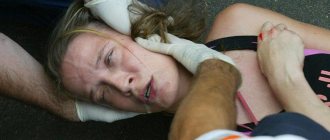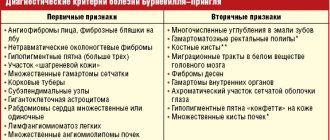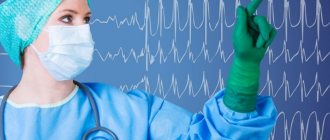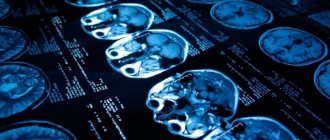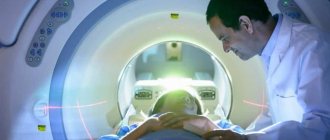Epilepsy drugs
Epileptic seizures occur when potassium leaves nerve cells at the same time calcium and sodium enter it. An impulse failure occurs, which provokes the release of neurotransmitters. Some activate the attack (glutamate), others inhibit it (GABA). Antiepileptic drugs are necessary in order to properly influence neurotransmitters and normalize the functioning of neurons.
AEDs are classified into different groups based on their mechanism of action:
- sodium and calcium blockers;
- glutamate blockers;
- GABA receptor stimulants;
- multiple action drugs.
There are also the following groups of drugs against epileptic seizures:
- anticonvulsants (anticonvulsants);
- sedatives (calming);
- vitamin complexes.
All medicines are produced in the form of tablets (capsules, granules), syrup (drops), powders for solution, injections. Each form of drugs has different bioavailability (rate of absorption into the blood):
- Solid (tablets, capsules). They can be slow or immediate. The former are used more often due to the absence of a sharp increase in the concentration of the active substance, which leads to its rapid decrease and reduction of the effect - this is how immediate-release tablets work. The delayed type is preferable due to the long-lasting effect, which allows you to minimize the number of medications taken.
- Soluble. The granules can be dissolved in water or yogurt - this method of consumption is well suited for small children or people with swallowing disorders.
- Liquid (drops, syrups). They are considered the most convenient for treating children and the elderly due to ease of use. Usually the packaging contains measuring devices (spoon, syringe).
- Injections. Indispensable in urgent situations due to its high bioavailability, when it is necessary to quickly relieve an acute attack. Most often used in hospitals or by emergency doctors.
Anticonvulsants
Anticonvulsants help prevent, reduce, or completely eliminate an epileptic seizure. Anticonvulsants block the excitation of nerve cells and activate GABA receptors, which inhibit excitation. Today doctors prescribe medications based on the following active ingredients:
- Sodium valproate. Increases the amount of GABA and stimulates its activity.
- Ethosuximide. Blocks calcium and sodium channels, weakens the effect of glutamate.
- Carbamazepine, phenytoin. Reduce the number of neurons in sodium channels, reduce the effects of amino acids and glutamate.
- Phenobarbital, primidone. Accelerate the activity of GABA receptors in calcium channels.
- Lamotrigine, oxcarbazepine, oxcarbazepine. They reduce the excitation of sodium neurons and inhibit glutamate activity.
- Levetiracetam, topiramate. They have multiple effects on nerve cells and neurotransmitters.
- Tiagabine. Blocks the attack of GABA by neurons, increases the concentration of beneficial neurotransmitters.
- Gabapentin. In addition to activating calming receptors, it relieves pain and tension.
Sedatives
Epileptics are often prescribed sedatives and sleeping pills - the active substances in tablets and injections help relieve stress, calm the nervous system and weaken the effect of impulses that provoke seizures. Usually prescribed:
- Valerian. Relaxes muscles, normalizes heart rate, suppresses attacks.
- Afobazol. It has a gentle effect on the nervous system and improves sleep.
- Relanium. Relieves anxiety, fears, overexcitement.
- Tenoten. Relieves psycho-emotional stress without atrophying muscles.
- Antidepressants. Prevents stress, panic and depression, which often cause seizures.
Other drugs
- Painkillers. An epileptic attack may be accompanied by pain in the head and muscles. Analgesics eliminate pain and additionally have an anti-inflammatory, vasodilating and calming effect.
- Hormonal. Most hormones in excess provoke an attack, but some of them (for example, dexamethasone) stop the transmission of impulses.
- Nootropic. They promote normal brain function while suppressing the activity of neurotransmitters.
Some doctors prescribe dietary supplements as a form of prevention and additional stimulation of the positive effect of drugs. It is not recommended to choose biological additives on your own - despite their plant origin, certain components can be harmful.
Vitamins and minerals for epilepsy
Vitamin and mineral complexes are especially necessary for young children or people following a ketogenic diet. With epilepsy, the patient has limited nutrition, which negatively affects physical and mental development. What vitamins and minerals restore the body’s functioning:
- B vitamins: For healthy metabolism and energy, the body needs folic acid, B6 and B12 - they eliminate drug resistance.
- Vitamin D. In epileptics, the liver actively produces enzymes that flush vitamin D from the body. Calcium deficiency threatens osteoporosis.
- Antioxidants. Taking medications reduces the amount of selenium, vitamins C and E, so the use of antioxidants is included in the medication course.
- Magnesium. Necessary for maintaining the balance of neurotransmitters, as well as for the inhibition of calcium channels.
- Melatonin. Inhibits excitatory receptors and glutamate, helps restore sleep and the biological rhythm of life, gives strength and energy.
- Omega-3. Fatty acids are essential for epilepsy due to their anticonvulsant effect. Large amounts of fat in the blood stimulate the production of ketones, which replace the stimulating glucose but are not harmful.
Epilepsy - symptoms and treatment
Epilepsy is a chronic brain disease characterized by repeated spontaneous seizures (paroxysms) that occur as a result of excessive neuronal discharges. Clinically, epilepsy is manifested by seizures and changes in consciousness (up to its loss) [4][11]. Epilepsy can be either an independent disease or a symptom of another pathology [9].
According to WHO, approximately every 4-10 people out of 1000 suffer from active epilepsy worldwide - this is one of the most common neurological diseases [20]. In low-income countries, epilepsy is more common, which is associated with an increased risk of malaria and neurocysticercosis, less developed health care structures and increased injuries from road traffic accidents. WHO states that almost 80% of people with epilepsy live in low- and middle-income countries [20]. Moreover, with proper diagnosis and treatment, most patients with epilepsy can live without seizures and deterioration in quality of life.
Epilepsy has been known to mankind for a long time - the first evidence of it dates back to 4000 BC. The disease is a serious social problem, as a lack of information about epilepsy contributes to misunderstanding, fear of symptoms among others and discrimination against patients.
The disease manifests itself in the form of short-term involuntary spasms in any part of the body, or spasms affect the entire body. Sometimes attacks are accompanied by loss of consciousness and loss of control over bowel or bladder functions. Seizures can range from minor memory loss and muscle spasms to severe, prolonged convulsions.
People with epilepsy are more likely to suffer bruises and fractures related to seizures. They are also more likely to have anxiety disorders and depression. In addition, patients with epilepsy have an increased risk of premature death from falls, drowning and burns.
Causes of epilepsy
There are many factors that lead to the occurrence of spontaneous bioelectrical activity (neuronal discharges), which lead to repeated epileptic seizures. Causes of epilepsy include structural, genetic, infectious, metabolic, immune and unknown etiological factors, for example:
- some genetic diseases;
- brain damage in the prenatal period and during birth (hypoxia or birth trauma, low birth weight);
- congenital malformations of the brain;
- head injuries;
- stroke;
- infections - meningitis, encephalitis, neurocysticercosis;
- brain tumors.
In some types of epilepsy, an attack of epilepsy can be triggered by sleep deficiency, alcohol intake, hyperventilation, sensory stimuli: flashing lights, temperature changes, loud sounds.
Depending on what exactly causes epileptic seizures, several types of pathology are distinguished:
- idiopathic (primary, or congenital);
- symptomatic (secondary or focal);
- cryptogenic epilepsy (seizures occur in the absence of focal changes in the brain according to electroencephalography, do not meet the criteria for the idiopathic form, but there is no evidence of their symptomatic nature).
In the case of idiopathic epilepsy, there is always a hereditary predisposition to seizures: the disease was diagnosed in blood relatives, or there were repeated loss of consciousness, freezing, or prolonged enuresis. Scientists have identified about 500 genes that can carry information about this mutation, and the type of inheritance of these genes can be either autosomal dominant (when a disease gene can appear in every generation, suppressing a healthy gene) or recessive (when a disease gene is suppressed by a healthy and manifestation of the disease is possible when the diseased gene is carried by the mother and father) [15][19].
Clinical manifestations of idiopathic epilepsy begin in childhood. Most often, there are no structural changes in the brain, but there is high neuronal activity. There is no pronounced cognitive defect. The prognosis for this form of epilepsy is often favorable; patients feel well on antiepileptic drugs, which significantly reduce the number of attacks and allow long-term remission to be achieved.
With symptomatic epilepsy, there is always an organic cause - cysts, brain tumors, malformations, neurological infections, strokes, as well as brain changes as a result of drug or alcohol addiction.
It is also possible for symptomatic epilepsy to manifest itself as part of hereditary diseases - about 160 of them are known. More often, such diseases involve mental retardation with an autosomal recessive type of inheritance, when both parents are carriers of the genes.
With cryptogenic epilepsy, it is not possible to identify the cause even with a very thorough examination. Cryptogenic epilepsy is one of the most complex chronic pathologies of the central nervous system, the development of which is due to unknown or uncertain causes. The disease is manifested by regularly recurring specific seizures. A long course causes the addition of mental disorders, cognitive abilities decrease, and psychotic symptoms develop.
It should be understood that the appearance of a single convulsive attack, although it is an alarming symptom, does not always indicate the presence of epilepsy. The doctor has the right to consider this diagnosis if the patient has had two or more attacks.
Chapter 5.
How and with what you can help yourself, your loved one or your child if you have seizures. The main method of treating attacks.
Do not listen to advice from friends about treatment or help with seizures, even if they are a health care worker, but not an epilepsy specialist.
The nature of the epileptic process and the types of attacks are so different that reading specialized literature for doctors when trying to self-diagnose and self-medicate will most likely only confuse you and, because of this, may harm your child.
All over the world, there is the only real way to treat epilepsy and seizures close to it - selecting the most effective anticonvulsant drug and taking it for a long time without any breaks or omissions, even after the complete disappearance of seizures. Anticonvulsants are also called antiepileptic drugs—recommendations use both of these terms for the same medications.
To correctly select an anticonvulsant drug, the doctor needs to be thoroughly familiar with the characteristics of seizures, the history of their appearance and development over time and depending on the treatment, etc. Therefore, you need to choose one regular doctor, who should be able to devote sufficient time not only at the first visit, but also to solve many possible problems that arise in the process of selecting and long-term use of anticonvulsants. The effectiveness of treatment depends not only on the professional level of the doctor you choose, but also on how accurate and reliable your description of the attack(s) in yourself or a loved one will be.
Selecting an effective drug at the beginning of treatment or when changing an ineffective one may require several weeks, since a stable level of the drug in the blood, preventing the development of attacks, is achieved as a result of 5 - 10 days of its regular use. The initial dose of anticonvulsant medication is usually several times less than planned and is increased after a certain number of days. We carry out such increases until the attacks stop or the maximum permissible dose of the drug is reached. Most of the unwanted side effects develop when the dose of the drug taken is increased too quickly. In the practice of some doctors, this occurs quite often, since the rules for the gradual administration of various drugs differ from each other, but the instructions for them are usually not contained.
The “Epi-Center” computer program complex I use contains detailed information about the procedure for prescribing 34 medications and allows us to prevent the development of complications from them. To do this, when prescribing a new medicine, you must report all other diseases that the patient has. Using the information from the International Epilepsy Data Bank “EPDATA” entered into the computer, not only is the best drug for relieving seizures selected, but also treatment of epileptic changes in the psyche, if any, is carried out.
The “golden” rule is to constantly take only one medicine against seizures. If one medicine becomes insufficiently effective, another medicine is selected to replace it. A combination of two or more medications for constant use is a necessary measure if it is not possible to find a single drug that would independently relieve attacks.
POSSIBLE COMPLICATIONS WHEN TAKEN ANTI-EPILEPTIC DRUGS
Around the world, millions of people take medications to prevent attacks several times a day, day after day. In rich countries around the world, people are willing to pay big bucks for drugs that prevent seizures but do not affect their ability to earn money, build a career, or have a good time on vacation. Therefore, powerful transnational pharmaceutical corporations are constantly developing new drugs, of which, after lengthy and thorough tests, only one hundredth of the developments enter the market, since the rest do not meet the above requirements. However, drugs against seizures that are completely free of side effects have not yet been invented. Moreover, the spectrum of side effects varies from drug to drug and includes up to hundreds of different conditions. Side effects are more pronounced at the beginning of use (allergies, intolerance to the drug). The toxic effect of the drugs, even with long-term use, is a less pronounced side effect compared to these initial reactions.
The risk of side effects really manifests itself when certain medications are prescribed incorrectly from large doses at once (in most cases, small doses are prescribed first and gradually increased over several days or weeks), when forced to use maximum doses of drugs for attacks that are difficult to treat, when taking large doses for a long time drugs.
Preventing the development of harmful side effects is possible with the help of the Epi-Center computer program I use. To do this, when choosing the optimal antiepileptic drug, existing disorders in the nervous system and internal organs are taken into account.
Each drug uses its own program for identifying side effects at their very beginning (in a hidden, unnoticeable form for others) and methods for their prevention - for this, it is best to come back for an appointment after it becomes clear that the drug completely relieves attacks and therefore it will take a long time to accept.
Unusual conditions and disorders that occur while taking medication are not necessarily caused by the medication. They may be the result of other reasons - diseases, poor quality food, etc. Therefore, in this case, it is better to consult the Epi-Center computer program to see if the drug used can cause such side effects.
CAN A CHILD OR ADULT “OUTGROW” SEIZURES WITHOUT CONSTANTLY TAKEN ANTI-CONVVIVANT DRUGS?
In special, very rare types of seizures and a special EEG pattern, the child can “outgrow” the seizures without constant medication. Some parents, hoping that the child would suddenly have just such attacks, did not start treatment (waiting to see if the child would have repeated attacks ) or stopped treatment without the doctor’s recommendations. In most cases, the attacks were repeated, and the period of the child’s stay without medication contributed to the formation of epileptic changes in his psyche and brain. In addition, if attacks are repeated several times, then persistent bioelectrical connections are formed in the brain, due to which each subsequent attack occurs easier and easier (as if “paving” the way for subsequent attacks).
In a significant proportion of cases (which also depends on the type of attacks), the child can “outgrow” the attacks, but only as a result of proper treatment and following these RECOMMENDATIONS.
WHEN THE DOCTOR ACCEPTS THE RISK OF RECURRENCE OF SEIZURES DUE TO A LOW DOSE OF MEDICATION OR SKIPPING A TAKE
1. At the beginning of taking a new antiepileptic drug for a given patient, the dose that will prevent the recurrence of a single attack throughout the entire long period of necessary use is usually unknown in advance. Of course, if you immediately prescribe the maximum permissible dose, then the risk of recurrence of attacks will be minimal. However, maximum doses of antiepileptic drugs can cause side effects, unlike minimum or average doses. Therefore, sometimes it is better to start taking a small dose of the drug, hoping that it will be enough and not a single attack will recur until the drug is discontinued after the prescribed period. Only if even one single attack is repeated, the dose must be increased, sometimes to the maximum, because Regularly recurring attacks are much more harmful to health than the possible side effects of antiepileptic drugs.
2. When prescribing an EEG to decide on reducing the dose of medication, it may sometimes be recommended to temporarily skip medication doses, usually only 1-2, on the eve of the study, in order to partially “release” the epi-activity for its detection and evaluation on the EEG.
BASIC RULES FOR TAKEN ANTI-EPILEPTIC DRUGS
It is necessary to strictly follow the instructions for taking the required daily dose of the medication. To do this, you can create a special box with compartments for the number of medications taken per day and lay out the morning, afternoon and evening portions once a day (the night before or in the morning) for taking them throughout the day. You can make a box with even more compartments, to arrange medications immediately for a week in advance. You can use 7 matchboxes for this. This way you will be sure that you have not missed taking your medicine. If you miss one of the doses, for example the daytime one, then in the evening you need to take both the daytime and evening portions so that the daily compartment of the box is empty.
KEEPING A DIARY
Choosing the necessary antiepileptic drug is a complex medical task, since it is first necessary to correctly diagnose the nature of the attacks. But even after accurately establishing the correct diagnosis of the type of attack, it is not known in advance which of the several drugs recommended by world science for the existing type of attacks will be most effective in this case. Therefore, in the process of selecting a drug, the patient or his relatives or parents need to keep a diary.
The diary records the days when the frequency and dose of medications taken and the characteristics of these changes change, the time of occurrence of attacks, the conditions under which they occur, and changes in the characteristics of attacks during treatment are recorded. All this data is entered into the diary on the same day, and not retroactively.
When describing the nature of an attack, it is very important to identify whether a person feels the approach of attacks and how, whether there is a disconnection or change in consciousness (whether the person reacts to someone being addressed to him, whether he follows with his eyes), tonic tension of the body, twitching. You should pay attention to even a very brief one-sidedness of the manifestations of an attack at its beginning. To correctly describe the attacks in the diary, it is necessary to study the recommendations: “WHAT ARE THE TYPES OF ATTACKS. HOW THEY DEVELOP AND PROCEED"
The tendency to have attacks and the frequency of their occurrence is determined by “internal” reasons - the characteristics of the brain of a given person. Most often, attacks recur without any external causes. However, for some people, certain “external” causes and influences can contribute to the occurrence of a specific seizure (provoke it). You should carefully look for these provoking factors and suspicious circumstances that preceded the next attack and record them in your diary (for this, read and follow another recommendation “IMAGE LIFE WITH EPI-ATTACKS”).
However, most often, attacks can be provoked by violation of the rules for taking medications set out in these Guidelines.
WITHDRAWAL OF CONTINUOUS ANTI-SEIZE MEDICATION
Cancellation of the drug can only be carried out by a doctor using a complex set of professional knowledge. On average, medication is discontinued after 2 years of continuous use after the last attack. In each specific case, the period may be longer (most often) or shorter (this happens less often). The withdrawal of the medicine is carried out gradually.
In children during a period of rapid growth with weight gain, long-term use is itself a process of gradual dose reduction. After all, doses are calculated in mg of medication per kg of the child’s weight. If the child’s weight increases and the same number of tablets is taken, then it is clear that the real dose decreases with age.
After stopping the medication, there remains a risk of relapse of seizures. However, the risk of seizures also exists in any healthy person who has never had a seizure; in healthy children, the chance of seizures is 1-2 out of 100.
FEATURES OF TAKING ANTI-EPILEPTIC MEDICINES FOR CONCOMIENTED ACUTE COLD AND INFLAMMATORY DISEASES AND PREVENTING COMPLICATIONS FROM THEIR INTERACTION WITH OTHER MEDICINES
For colds, infections, and if the patient has a subcortical epi-focus, then also for severe stress and negative experiences, the dose of medication must be increased by one third.
However, it is impossible to increase the dose of phenobarbital, hexamedine, benzonal for colds and inflammatory diseases if an aminoglycoside antibiotic is prescribed (the instructions for the antibiotic indicate which group of antibiotics it belongs to). The combination of these medications can cause muscle weakness and even stop breathing. It is necessary to warn the doctor who prescribes antibiotics about this and, if there is an urgent need to prescribe antibiotics - aminoglycosides - to carry out such treatment only in a hospital.
The dose of diphenin for colds should not be increased, but, on the contrary, reduced if acetylsalicylic acid drugs (epheralgan, aspirin, etc.) or sulfonamides (such as biseptol) are prescribed for their treatment.
When taking valproic acid preparations (Depakine, etc.) simultaneously with acetylsalicylic acid preparations (Epheralgan, aspirin, etc.), the tendency to bleeding increases. In general, taking all antiepileptic drugs simultaneously with anticoagulants (anti-thrombotic drugs) should be done with caution.
The interaction of antiepileptic drugs with other less common medications cannot be presented here due to lack of space and the constant addition of such information. Therefore, when you start taking a new medicine for you for another disease, look for instructions in the instructions for how it interacts with the antiepileptic drug you are taking. Sometimes such information may be in the instructions for an antiepileptic drug. In doubtful cases, it is better to consult your doctor.
PREVENTION OF COMPLICATIONS WHEN TREATING OTHER CONSOLIDATED DISEASES
Some medications used to treat various diseases may lower the seizure threshold (this side effect may occur primarily with some medications that affect the nervous system). The computer program “NeuroPharm” that I use, which contains information about drugs for the treatment of nervous and mental diseases, allows me to check drugs for this side effect, including when they are prescribed by other doctors.
Amidopyrine, including those contained in complex tablets, is contraindicated for the treatment of other diseases during attacks (this drug is used for headaches and fever). Aspirin (acetylsalicylic acid) - should not be used while taking valproic acid drugs (Depakine, etc.).
Before treating worms, it is better to consult with your doctor about increasing the dose of anticonvulsants - because when giving antihelminthics, the risk of attacks increases.
Allergy medications (antihistamines) also increase the risk of recurrence of attacks.
CONTRAINDICATIONS FOR PHYSICAL PROCEDURES IN THE TREATMENT OF CONCOMITING DISEASES
Attacks can be provoked by the use of the following physical procedures: mud, paraffin, ozokerite applications, galvanic mud (especially extensive or involving the cervical-collar area). Among electrical procedures - in case of frequent epileptic attacks, especially with a vegetative component, low-frequency pulsed currents (amplipulse, diadynamic and sinusoidally modulated currents, electrical stimulation), and high-frequency alternating currents (UHF) are contraindicated. Magnetic therapy should also not be used. This type of procedure, such as electrophoresis of various substances, on the contrary, is sometimes specifically prescribed for the treatment of certain types of attacks.
FEATURES OF ANESTHESIA DURING SURGICAL OPERATIONS IN PATIENTS WITH SEIZURES AND PREVENTION OF COMPLICATIONS FROM DRUGS TAKEN DURING OPERATIONS
Seizures are not a contraindication for operations and anesthesia. However, the anesthesiologist must know about the diagnosis in order to correctly select the type of anesthesia. The anesthesiologist should also know about the antiepileptic drugs being taken, since: 1) some of them may slightly reduce blood clotting ability and the anesthesiologist should be ready to take the necessary measures if necessary; 2) the anesthesiologist should give advice on the timing of taking or increasing the usual daily dose of antiepileptic drugs for 1-2 days before surgery, if it is prohibited to take anything orally immediately before or after the operation (so that a sufficiently high level of the antiepileptic drug is maintained in the blood throughout this period).
When planning an operation in advance, it is better to consult your doctor - an epileptologist in advance about the possible side effects of taking a specific antiepileptic drug during the operation.
To the table of contents of the article “Convulsions, epileptic seizures and epilepsy.”
Epilepsy in childhood
Part 6. Read the beginning of the article in No. 6 and 10, 2014 and No. 1, 2015
Treatment of epilepsy is the most important aspect in this group of diseases. In the foreword to his new book, Epilepsy in Children and Adolescents, JW Wheless (2013) points out that “of all the neurological diseases affecting infants, children and adolescents, epilepsy poses a clear challenge to patients, their parents and doctors, requiring significant experience in the assessment and treatment of the disease" [1].
It is quite natural that in order to eliminate epileptic seizures in children, only antiepileptic drugs that are effective against specific types of seizures (or specific forms of epilepsy) should be used. The choice of drugs for the treatment of epilepsy is always determined, first of all, by the effectiveness of a particular drug in various clinical situations [2].
In modern childhood epileptology, such old antiepileptic drugs as, for example, bromides, methsuximide, phenacemide and trimethadione are practically not used. Most of these drugs are insufficiently effective and are also potentially toxic [3].
Traditional antiepileptic drugs such as benzobarbital and primidone are used relatively rarely. Since the 1990s. relatively numerous new antiepileptic drugs have found use in our country; these include lamotrigine, topiramate, oxcarbazepine, levetiracetam, pregabalin, gabapentin, felbamate, tiagabine, perampanel and lacosamide (see below).
Pharmacological drugs for the treatment of epilepsy
Listed below in alphabetical order are first- and second-generation antiepileptic drugs, as well as “conditional” antiepileptic drugs and indications for their use. The so-called “conditional” antiepileptic drugs are those drugs that are initially intended for other therapeutic purposes, but can be used in the treatment of epilepsy and/or status epilepticus (SE) in various clinical situations [3].
In particular, “conditional” antiepileptic drugs are acetazolamide (carbonic anhydrase inhibitor), clomethiazole (anxiolytic/hypnotic), Cortexin (neuropeptide bioregulator with neuroprotective activity), lidocaine (local anesthetic), pentobarbital (short-acting barbiturate from the group of hypnotics) and some others (see below).
The list of pharmacological agents and indications for their use in the treatment of epilepsy is as follows:
- acetazolamide (treatment of epilepsy as part of combination therapy);
- benzobarbital (convulsive, non-convulsive and polymorphic seizures);
- valproate (all types of epileptic seizures);
- vigabatrin (epilepsy with focal seizures - complex and secondary generalized, West syndrome - in combination with other antiepileptic drugs, photosensitivity seizures, complicated febrile seizures);
- gabapentin (epilepsy with focal seizures with or without secondary generalization);
- diazepam (all types of status epilepticus);
- zonisamide (additional treatment of focal seizures in patients over 12 years of age, treatment of epileptic syndromes manifested as myoclonus);
- carbamazepine (focal seizures with or without secondary generalization, primary generalized tonic-clonic seizures, but not other generalized seizures);
- clobazam (focal and tonic-clonic seizures);
- clonazepam (typical absence seizures, initial or additional drug for atypical absence seizures, atonic and myoclonic seizures);
- Cortexin (additional treatment for epilepsy);
- lacosamide (focal seizures with or without secondary generalization in children over 16 years of age);
- lamotrigine (partial, complex focal and primary/secondary generalized seizures, including tonic-clonic seizures, as well as atonic seizures, absences, resistant to therapy with other anticonvulsants; seizures associated with Lennox-Gastaut syndrome in children over 2 years of age);
- levetiracetam (adjunctive therapy in the treatment of epilepsy with partial seizures with or without secondary generalization in children from 4 years of age);
- lorazepam (status epilepticus, serial epileptic seizures in children - in combination with basic antiepileptic drugs, neonatal seizures resistant to treatment with phenobarbital and/or phenytoin; treatment of complex focal seizures, symptomatic convulsive states);
- nitrazepam (West syndrome, some other forms of seizures);
- oxcarbazepine (as monotherapy or in combination with other antiepileptic drugs for focal seizures with or without secondary generalization, for primary generalized tonic-clonic seizures);
- perampanel (as an adjuvant for the treatment of focal seizures in patients with epilepsy over the age of 12 years with or without secondary generalized seizures);
- pyridoxine (vitamin B6-dependent epilepsy, complex treatment of other pharmacoresistant forms of epilepsy in children);
- pregabalin (additional treatment of focal seizures with or without secondary generalization - from 17 years of age);
- primidone (epilepsy of various origins - mainly grand mal seizures; less effective for focal, myoclonic, akinetic seizures);
- stiripentol (complex treatment of refractory attacks of generalized tonic-clonic seizures in children with Dravet syndrome - in combination with clobazam and valproate, used in the absence of effect from clobazam and valproate);
- sulthiam (focal seizures and rolandic epilepsy, West syndrome);
- tiagabine (therapy of focal and generalized epileptic seizures);
- topiramate (focal or generalized tonic-clonic seizures - as monotherapy or in combination with other antiepileptic drugs, additional therapy for seizures associated with Lennox-Gastaut syndrome, newly diagnosed epilepsy in children from 2 years of age);
- felbamate (an adjuvant for the treatment of focal and generalized epileptic seizures in Lennox-Gastaut syndrome that cannot be treated with other drugs - from 4 years of age);
- phenyloxopyrrolidinylacetamide (status epilepticus, epilepsy and convulsive conditions);
- phenytoin (generalized tonic-clonic, simple and complex focal, and psychomotor seizures; status epilepticus);
- phenobarbital (all types of epileptic seizures, except absence seizures; status epilepticus);
- folic acid (treatment of folate-responsive forms of epilepsy, as well as additional treatment of cognitive impairment and intellectual disorders in epilepsy - in combination with or without vitamin B12);
- fosphenytoin (generalized tonic-clonic, simple and complex focal, as well as psychomotor seizures, status epilepticus);
- ethosuximide (various variants of minor seizures of primary and secondary generalization, in some cases - during myoclonic seizures) [3–12, 22].
Restrictions on the use of various drugs listed (in addition to age-related ones) for epilepsy mainly relate to the ability of these drugs to induce seizures and/or aggravate the manifestations of this group of diseases. It is appropriate to recall here that only valproic acid preparations are considered effective in the treatment of all known types of epileptic seizures, without, in addition, having the ability to aggravate them (with the exception of epileptic syndromes accompanying mitochondrial pathology and some other metabolic disorders in children) [3 ].
The potential possibility of correction with the help of antiepileptic drugs of non-epileptic disorders associated with epileptiform activity, considered in the work of V. Yu. Nogovitsyn et al. (2006) and supported by some neurologists, is extremely controversial and controversial [13]. Antiepileptic drugs vigabatrin, tiagabine, clobazam, and sulthiam were not registered in the Russian Federation as of mid-2015.
Medicines for the symptomatic treatment of epilepsy
In the symptomatic treatment of vascular and cognitive disorders in epilepsy in children, the vascular drugs vinpocetine and cinnarizine, nootropic agents are used: aspartic acid (Cogitum), hopantenic acid (Calcium hopanthenate), Glycine, Piracetam, Semax (0.1% solution), Cortexin, phenyloxopyrrolidinylacetamide and others [3, 5, 6, 8, 14].
If vinpocetine, cinnarizine and Piracetam are relatively widely used in various countries (besides the Russian Federation and the CIS), then Semax, Cortexin, hopantenic acid and phenyloxopyrrolidinylacetamide are used in the treatment of epilepsy almost exclusively in our country.
Drugs for the treatment of epileptic stutus
Among the drugs for the treatment of status epilepticus, there are both antiepileptic drugs and representatives of other drug groups: sodium valproate (parenteral forms), diazepam, chloral hydrate (rectal), paraldehyde, magnesium sulfate, sodium thiopental, lorazepam, pentobarbital (for administration to barbiturate coma) , midazolam, lidocaine, propofol, clomethiazole (ethane disulfonate of chlormethiazole), phenyloxopyrrolidinylacetamide, phenytoin, fosphenytoin [3–6, 8, 12].
The latest edition of the “Federal Guidelines for the Use of Medicines (Formulary System)” (2012) does not present all of the listed drugs that are used in the treatment of status epilepticus in various countries of the world [8]. In particular, this pharmacological reference does not contain any mention of drugs such as pentobarbital and fosphenytoin.
Metabolic agents in the treatment of epilepsy
There are a number of neurometabolic agents used in pediatric epileptology. In particular, these include creatine, Reamberin and coenzyme Q10 (dietary supplement) (complex therapy of various types of primary and secondary mitochondrial pathology with damage to the central nervous system and manifestations in the form of epileptic seizures), levocarnitine/L-carnitine (carnitine deficiency in patients with epilepsy taking valproate; methylmalonic and propionic acidemia), ornithine (epileptic seizures due to urea cycle disorders and other conditions accompanied by hyperammonemia), serine (epileptic seizures significantly associated with defects in the biosynthesis of this amino acid), tetrahydrobiopterin/sapropterin (epileptic seizures associated with phenylketonuria and tetrahydrobiopterin deficiency), flupirtine and cysteamine (neuronal ceroid lipofuscinosis), etc. [3].
There are other metabolic agents used to treat epileptic seizures in specific clinical situations.
Experimental drugs to treat epilepsy
New (experimental) drugs potentially intended for the treatment of epilepsy and status epilepticus include the following: brivaracetam, valrocemide, isovaleramide, carabersate, carisbamate, losigamon, remacemide, retigabine, rufinamide, safinamide, seletracetam, soretolide, stiripentol, talampanel, fluorofelbamate, eslicarbaze pin , DP-valproic acid. Some of them have been undergoing clinical trials in various phases over the past years. Brivaracetam is believed to be 10 times more effective than oxcarbazepine for certain types of seizures under experimental conditions.
It is expected that in the near future the arsenal of antiepileptic drugs will be significantly expanded with third-generation drugs [13, 15].
Alternative and complementary therapies for epilepsy
There are methods of alternative and complementary therapy for epilepsy, which are divided into medicinal and non-medicinal.
Among the methods of alternative pharmacological treatment of epilepsy used in various clinical situations, one should list hormonal agents (synthetic analogue of adrenocorticotropic hormone - tetracosactide, corticosteroid hormones - prednisolone, dexamethasone, natural and synthetic progesterone and its metabolites), neuropeptide bioregulator Cortexin, human immunoglobulins for intravenous administration , antiviral agents (acyclovir, ganciclovir) [3, 14, 16, 17]. The latter are intended for selected cases of Rasmussen's encephalitis [18].
The main methods of alternative non-drug treatment of epilepsy include neurodietological approaches: ketogenic diets (classical - according to RM Wilder, liberalized - based on medium-chain triglycerides according to PR Huttenlocher, as well as other options - John Radcliffe, Great Ormond Street, diet based on long-chain triglycerides, diet on based on corn oil, etc.), modified Atkins diet, oligoantigenic diets, diet with a low glycemic index, exclusion of antinutrients (aspartame, monosodium glutamate, etc.), use of vitamins (vitamin therapy), supplementation of polyunsaturated fatty acids (PUFAs) and/ or mineral substances, the use of dietary supplements and substances (lecithin, carnitine, taurine, dimethylglycine, quercetin, coenzyme Q10, etc.), agliadine (gluten-free) diet (for epilepsy associated with celiac disease - Gobbi syndrome), the use of edible medicinal plants and drugs based on them [3, 7, 12, 19].
At least 4 types of neurosurgical intervention for epilepsy are known: 1) focal resection/lobectomy (removal of one lobe, usually the temporal lobe); 2) subpial transsection/topectomy (removal of the cortex); 3) hemispherectomy (removal of one hemisphere of the brain); 4) corpuscallosotomy (separation of the hemispheres of the cerebral cortex by dissecting the corpus callosum) [3, 13, 12, 15].
Focal resection is used for epileptic seizures with a focal onset that developed in the removed area of the cerebral cortex. Subpial transection is indicated for tonic, clonic or tonic-clonic seizures with falls and physical damage; with large lesions that cannot be resected, and also in the presence of secondary bilateral synchronization. Hemispherectomy is used for Rasmussen syndrome or other types of unilateral pathology of the cerebral hemispheres associated with functional disorders in the contralateral upper limb. Corpuscallosotomy is indicated for epileptic seizures with onset in the form of focal seizures emanating from an area of the cerebral cortex that is not subject to resection [3, 12, 13, 15].
The pharmacoresistance of epilepsy must always be proven before a decision is made on the possibility of surgical treatment. Absolute contraindications to surgical treatment are degenerative and metabolic disorders [3].
Vagal stimulation (electrical stimulation of the vagus nerve using an implanted device) occupies a special place among the methods of neurosurgical treatment of epilepsy. This method of therapy is considered indicated in the presence of localization-related seizures (with or without secondary generalization), as well as in generalized seizures refractory to traditional antiepileptic therapy [3, 13].
Other alternative non-drug treatments include biofeedback (BFB), acupuncture (traditional acupuncture and electroacupuncture), psychotherapy, hypnosis, and therapeutic plasmapheresis. The latter can be performed in patients with drug-resistant forms of epilepsy or in cases of toxic effects of antiepileptic drugs as a method of removing pathogenic elements from the blood (toxins, antibodies, circulating immune complexes, paraproteins, etc.).
Homeopathy, herbal medicine and aromatherapy, polarized light, and the use of specially trained dogs (seizure alert dogs) are used. Electroconvulsive therapy has been replaced by the method of magnetic convulsive therapy [3].
The relationship of evidence-based medicine to alternative therapy for epilepsy
The vast majority of methods of alternative and complementary therapy for epilepsy (especially non-pharmacological ones) are difficult to evaluate from the standpoint of evidence-based medicine.
However, the effectiveness of the vagal stimulation method is considered confirmed in the treatment of focal epileptic seizures. Only relatively recently (in 2012) evidence-based medicine recognized the effectiveness of ketogenic diets, confirming “short- and medium-term positive effects in the control of epileptic seizures, comparable to those of modern antiepileptic drugs.”
Psychological therapy, including combined relaxation, behavioral therapy and biofeedback, does not have verified evidence of effectiveness. In a systematic review on the use of acupuncture in epilepsy, DK Cheuk and V. Wong (2008) conclude that there is insufficient evidence to state the effectiveness of this method [20]. Despite the possibility of using therapeutic plasmapheresis for epilepsy, there are no objective data to establish the superiority of this therapeutic regimen over others. Hypnosis is a controversial method of treating epilepsy, the positive effect of which on the condition of patients with epilepsy has not been confirmed. Aromatherapy, in particular inhaling the aromas of camphor and rosemary, can lead to a worsening of the condition of patients with epilepsy and an increase in the frequency of seizures. The effectiveness of polarized light in epilepsy does not stand up to criticism at all [3].
Pediatric neurologists should be critical of alternative therapies for epilepsy, but not completely neglect them, since in this case the possibilities of overcoming drug resistance of the disease will be ignored.
Prognosis for epilepsy
Since the term “epilepsy” itself is collective, and its content includes dozens of different epileptic syndromes, it is quite natural that the prognosis for certain forms of the disease can vary significantly.
Approximately 5% of people experience at least one seizure throughout their life, which is not subsequently accompanied by the development of epilepsy. The risk of a second epileptic seizure 3 years after the first is 27–84%. The risk of a third seizure in a patient who has previously had 2 unprovoked seizures is quite high (about 73%).
The most important factors that determine the immediate and long-term prognosis of epilepsy are the following: etiology, quality of life, timely initiation of therapy, achievement of remission, withdrawal of antiepileptic therapy, mortality, cognitive-behavioral aspects, social-cognitive aspects of epilepsy. First of all, the prognosis of epilepsy in children is determined by the response to therapy with antiepileptic drugs in the first 6–12 months; a certain importance is given to the presence/absence of concomitant neurological diseases [3, 13, 15, 21].
The prognosis for symptomatic epilepsy is always considered as more serious (less favorable) than for cryptogenic and idiopathic forms of the disease. The risk of recurrence of epileptic seizures after stopping antiepileptic drugs after at least a complete 2-year remission is about 20% for children (about 40% for adults) [3, 21].
The long-term prognosis of epilepsy is determined not only by the relief of seizures, but also by the preservation or deficiency of cognitive functions. Social outcome in epilepsy depends primarily on cognitive function, antiepileptic drug therapy, and psychosocial factors. Early diagnosis of the disease (before the development of a long period of cognitive impairment), adequate antiepileptic treatment aimed at eliminating seizures and changes in electroencephalography, as well as active neuropsychological rehabilitation are the best guarantee of avoiding pronounced neuropsychological consequences of epilepsy [13, 15].
The general prognosis for seizure control in epilepsy is relatively favorable; from 70% to 80% of patients (with therapy) become free from seizures, and in half of them antiepileptic treatment can be discontinued. Approximately 5% of children with drug-resistant forms of epilepsy are unable to lead a normal life and are dependent on others for daily activities [3].
Conclusion
In general, it should be recognized that over the past decades, representatives of neuroscience and clinical medicine have achieved a certain breakthrough in understanding the etiopathogenetic mechanisms of epilepsy in patients of different ages, which was greatly facilitated by advances in the field of neurochemistry, neurogenetics, neuroimmunology and neuropsychology. As a result, approaches to the diagnosis and treatment of epilepsy in children and adults have been optimized, although this group of chronic paroxysmal disorders of cerebral functions continues to remain one of the most pressing problems in neurology.
Literature
- Wheless JW (ed). Epilepsy in children and adolescents. Oxford (UK)-Hoboken (NJ, USA). Wiley-Blackwell. 2013, 378 p.
- Ermakov A. Yu., Balkanskaya S. V. Choice of antiepileptic drug: effectiveness and cognitive control // Medical advice. 2007. No. 3. pp. 12–15.
- Epilepsy in neuropediatrics (collective monograph) / Ed. Studenikina V. M. M.: Dynasty, 2011. 440 p.
- Patient management protocol. Epilepsy // Problems of standardization in healthcare. 2005. No. 3. P. 4–73.
- Register of Medicines of Russia "Encyclopedia of Medicines". 21st edition, revised. and additional M.: RLS-2013.
- Vidal Directory. Medicines in Russia: Directory. Publishing house 19th, M.: AstraPharmServis, 2013.
- Studenikin V.M., Shelkovsky V.I., Balkanskaya S.V. Epilepsy in children of the first three years of life (parts 1–2) // Pediatrician’s Handbook. 2009. No. 3–4. pp. 3–17, 4–22.
- Federal guidelines for the use of medicines (formulary system). Vol. XIII. M., 2012.
- Antiepileptic drugs (Levy RH, Mattson RH, Meldrum BS, Perucca E., eds.). 5 th ed. Philadelphia/Baltimore. Lippincott Williams&Wilkins/A Wolters Kluwer Co. 2002. 968 p.
- Kneen R., Appleton RE Alternative approaches to conventional antiepileptic drugs in the management of paediatric epilepsy // Arch. Dis. Child. 2006. Vol. 91. P. 936–941.
- Oxford American Neurology Library (OANL) Antiepileptic drugs: a clinician's manual (Asadi-Pooya AA, Sperling MS, eds.). Oxford-New York. Oxford UniversityPress. 2009. 250 p.
- Shorvon S., Perucca E., Engel J. Jr. (eds). The treatment of epilepsy. 3rd ed. Chichester (UK). Wiley-Blackwell/A John Wiley & Sons, Ltd. 2009. 1076 p.
- Encyclopedia of basic epilepsy research/Three-volume set (Schwartzkroin P., ed.). vol. 1–3. Philadelphia. Elsevier/Academic Press. 2009. 2496 p.
- Guzeva V.I., Trubacheva A.N. Use of cortexin in the complex treatment of epilepsy in children // Terra Medica. 2003. No. 2. P. 19–21.
- Epilepsy: A comprehensive textbook (Engel J., Pedley T.A., eds.). 2nd ed. vol. 1–3. Lippincott Williams&Wilkins/A Wolters Kluwer Business. 2008. 2986 p.
- Nolan MA, Carter Snead O. III. Adrenocorticotropin and steroids. Chapter 67. In: The treatment of epilepsy: Principles and practice (Wyllie E., ed.). 4 th ed. Philadelphia/Baltimore. Lippincott Williams & Wilkins. A Wolter Kluwer Co. 2006. P. 931–938.
- Vincent A., Irani SR, Lang B. The growing recognition of immunotherapy-responsive seizure disorders with autoantibodies to specific neuronal proteins // Curr. Opin. Neurol. 2010. Vol. 23. P. 144–150.
- Shelkovsky V.I., Studenikin V.M., Maslova O.I. Rasmussen syndrome in children: features of clinical manifestations and treatment // Issues. modern pediatrics. 2004. T. 3. No. 3. P. 66–69.
- Ranganathan LN, Ramaratnam S. Vitamins for epilepsy // Cochrane Database Syst. Rev. 2005. (2): CD004304.
- Cheuk DK, Wong V. Acupuncture for epilepsy // Cochrane Database Syst. Rev. 2008, (4): CD005062.
- Smith RL Withdrawing antiepileptic drugs from seizure-free children // Aust. Prescr. 2006. Vol. 29. P. 18–21.
- Nogovitsyn V. Yu., Nesterovsky Yu. E., Osipova G. N., Rusakova V. D. et al. Epileptiform activity in children without epilepsy: clinical and electroencephalographic correlations // Zh. neurol. psychiatry. 2006. T. 106. No. 6. P. 42–46.
V. M. Studenikin, Doctor of Medical Sciences, Professor, Academician of the Russian Academy of Economics
FSBI "NTsZD" RAMS, Moscow
Contact Information
* The drug is not registered in the Russian Federation.
